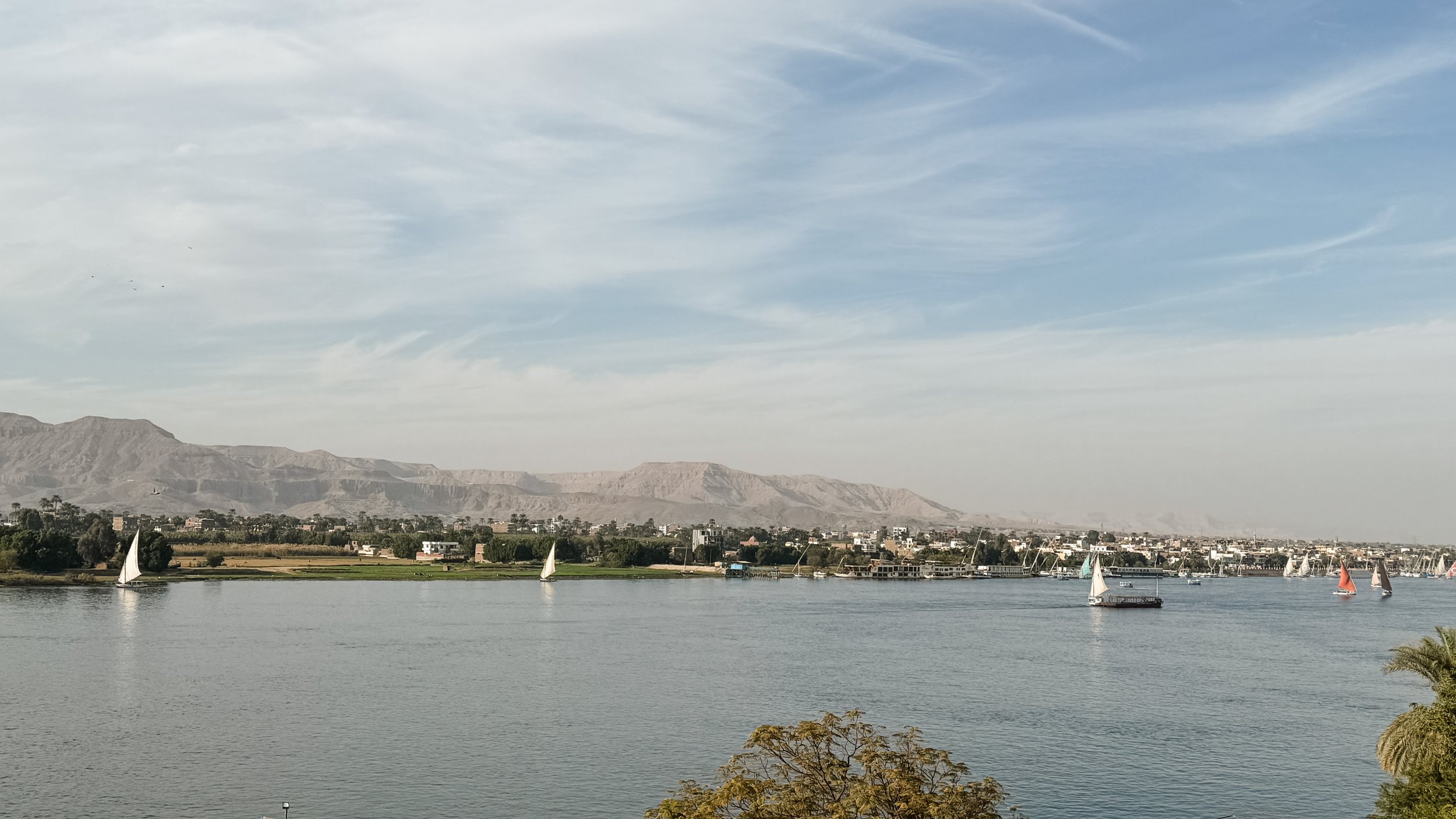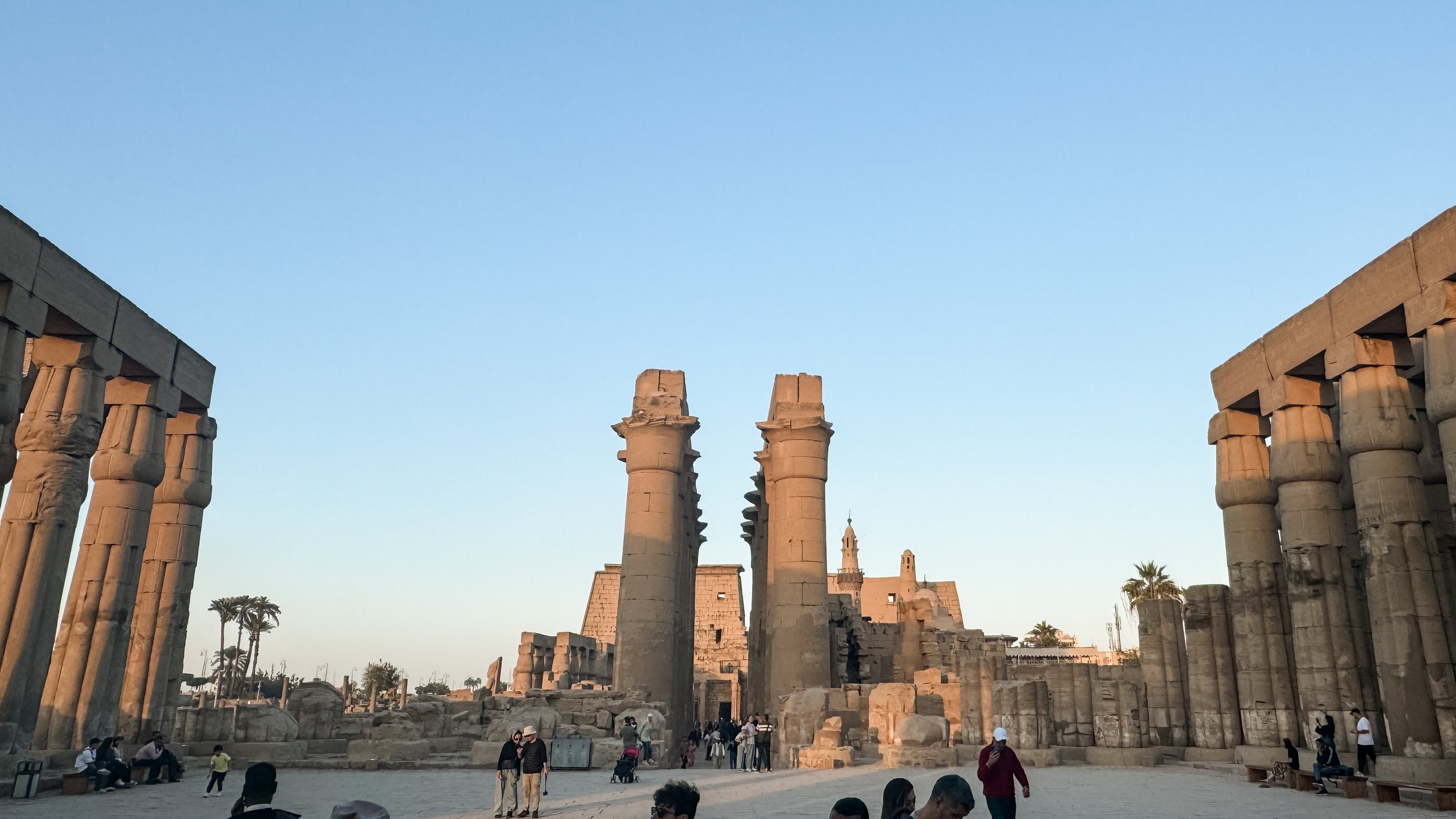After we visited the Valley of the Kings and Queen Hatshepsut’s Temple on the West Bank of Luxor, LT and our driver dropped us back to our hotel for an afternoon rest. Ibrahim, our Memphis Tours Leader, acommpanied us for an afternoon cruise. Initally, we thought this would be a felucca ride up and down the Nile, a felucca being a traditional sail boat used in Egypt. However, when we met our boat driver at the dock, we were found out that we were actually going to go to Banana Island. Also, because there wasn’t much wind that afternoon, our boat driver (I unfortuantely can’t remember his name) recommended we take one of the motorised boats instead.
We actually had a stunning Nile view from our hotel room but it was an added bonus to see Luxor from the vantage point of the Nile. Our boat driver / guide was fantastic, he was so chatty and friendly and really had a lot of interesting information.
Banana Island is a small banana plantation on the banks of the Nile. There seemed to be a number of boats arriving with tourists but it didn’t really seem like a tourist attraction, it was just a banana farm! But it was interesting nevertheless! Our guide told us about the organic banana farming practices and all the interesting featured of banana trees and then we were able to sit down at the picnic tables that overlooked the Nile and indulge in a bowl full of little organic bananas, which were actuallty really delicious. The girls loved them, which was great because we all had been struggling with a lack of appetite after over night of fevers.
The sun was setting as we headed back down the Nile when our guide offered to let Braino and I steer the boat for a bit. I was so terrible at it our guide quickly booted me back out of the drivers seat, haha! But Braino navigated us skillfully down the Nile for quite a while. The boat was actualluy rather big, a group of 30 people could have fit quite easily in to it but we had it all to ourselves.
The first time I came to Egypt in 2007, our tour included two nights of sleeping on a felucca while travelling from Aswan to Luxor. This was a really unique experience, because there was no showers, toilets or even rooms. Our group pretty much camped out on the deck of this sail boat for two days. I loved it but I didn’t think it would be the best option this time around with the girls. Braino and I did consider doing one of the famous Nile cruises boats that travel between Luxor and Aswan but it’s rather pricey and we thought that could get a little tidious for the kids, because there isn’t much onboard to keep them occupied. I’d love to do a Nile cruise later in life maybe, when I can kick back and read Agatha’s Christies ‘Death on the Nile’.































